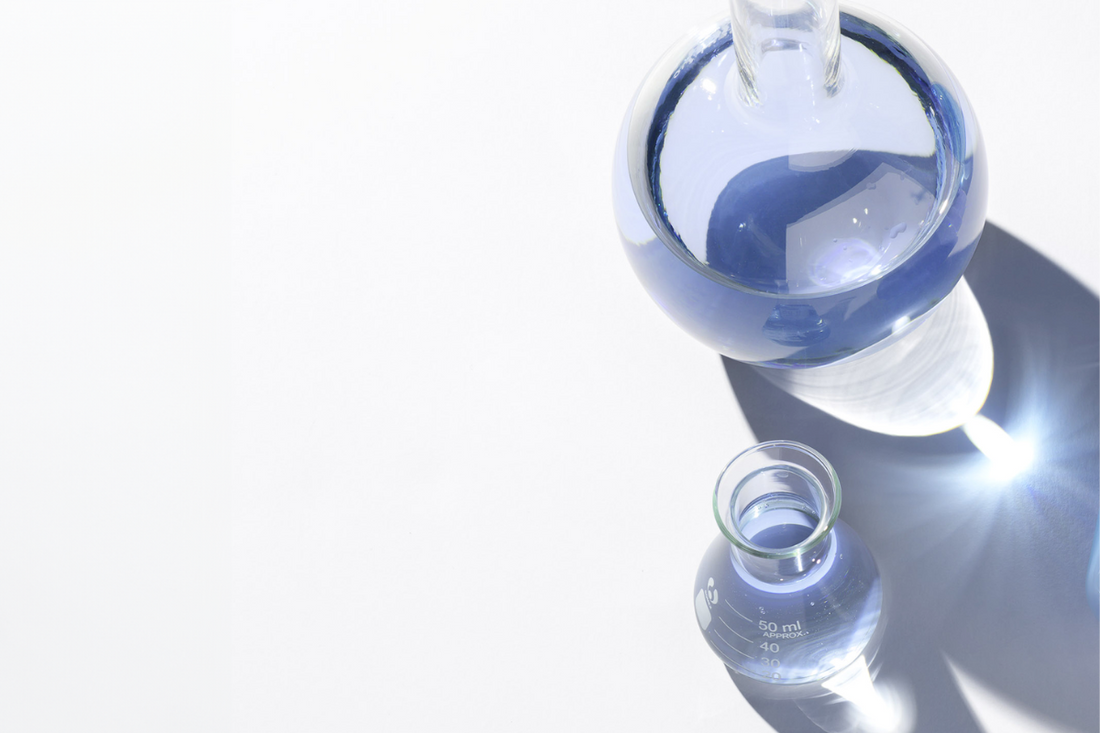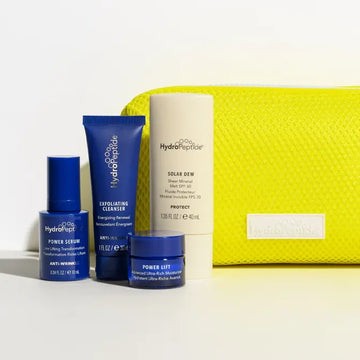
What are Copper Peptides? Explained
Share
For decades, despite brands using copper peptides in their formulations, they rarely shouted about them. Knowing that they worked wonders, but worried you guys wouldn’t like the idea of applying a metal to your skin they kept mum. But as consumers become savvier, we’re seeing a shift to brands shouting about this clever ingredient. If you’re curious about what they are, how they work and the easiest way to fit them into your routine, read on.
What are copper peptides?
Peptides are short chains of amino acids - the essential building blocks of protein – that act as messengers that stimulate skin cells to produce more of proteins like collagen and elastin. When a peptide binds to copper, you get a copper peptide. This double act makes for the perfect team, as copper peptides are already found naturally in the body, meaning the skin recognises it and welcomes it right in.
How copper peptides work
Think of copper peptides as sleeper agent. The peptide element encourages healthy housekeeping in the skin’s support network, while the copper helps everyday cellular processes run smoothly. By improving the conditions your skin works under, you’re enabling it to do its best work.
Copper peptide benefits for skin
Used consistently, copper peptides help the skin repair more effectively as we age. They effectively…
Firm
Copper peptides boost both collagen and elastin, both of which are needed to maintain a youthful complexion. With consistent use, all that extra structural support can firm up skin, improve facial contours and smooth lines and wrinkles.
Even out skin tone
By helping skin clear damaged cells and produce healthy new ones, copper peptides can soften the look of sun spots, post-inflammatory hyperpigmentation, and light surface scarring - for a more even skin tone over time.
Reduce redness
Copper peptides have a calming, anti-inflammatory effect and help speed-up repair. In practical terms this means users will experience less visible flushing and redness which is handy for those prone to rosacea or sensitivity that triggers redness.
Banish breakouts
Copper peptides regulate oil production and support the skin’s microbiome, which keeps acne producing bacteria at bay. Incorporating them into your skincare regime will help stop pores from clogging with daily build-up from sebum, sweat, grime and pollution. Bye-Bye spots.
Who are copper peptides for?
If you’re starting to notice early laxity, fine lines or your skin is looking tired, copper peptides are an easy win. They’re also great for anyone who is looking to protect their skin barrier – especially if redness and sensitivity is an issue.
For those with pigmentation and acne concerns, copper peptides make a great add on to a targeted regime, and impressively this active is generally a winner for all skin types and tones. Though, highly reactive skin types should patch test and go slow. Start with using your copper peptide skincare product once a day for a week before building to twice daily if you don’t experience any mild itching, redness or tingling.
How to use copper peptides
Keep the steps straightforward, there’s no need to overcomplicate your routine if you want to add copper peptides into your skin’s life. Cleanse, keeping any exfoliation gentle. Apply your targeted serum and seal with a copper peptide packed moisturiser.
The HydroPeptide Nimni Peptide Day Cream, is a daily moisturiser designed to firm and refine texture while delivering long-lasting hydration. It sits cleanly under sunscreen and make-up, which makes it a strong morning choice. While the Hydropeptide LumiFirm Radiant Tightening Lotion, is a lightweight, radiance-boosting moisturiser that combines copper peptides, with hydrating actives. This is ideal for normal, combination and oily skin types and leaves complexions glowing.
Can you mix copper peptides with other skincare?
Yes. Copper peptides play nicely with hydration helpers such as hyaluronic acid and glycerin, and with barrier lipids like ceramides and fatty acids. If your routine includes stronger actives like retinoids, exfoliating acids or high-strength vitamin C, you can still keep copper peptides in the mix. The trick is to stagger usage so you’re not doubling up on actives that do the same thing or that cancel each other out.
For example, vitamin C is offered in various pH levels and its oxidising properties can destabilise copper peptides, so they stop working. When it comes to exfoliating acids and copper peptides, you’ll find that stronger acids like AHAs can significantly lower the skin's pH, which can also reduce their effectiveness. While retinoids (think adapalene, retinol, retinal, and tretinoin) and copper peptides both boost the skin’s natural exfoliating process. Using both, especially on the same day could lead to sensitivity and irritation.
Alternate usage, and don’t use copper peptides at the same time as these other actives. It does mean you’ll need to create a timetable, but the results will be well worth it.
Why choose copper peptides
Copper peptides aren’t about headline-grabbing before-and-afters; they’re the quiet consistency that keeps results moving in the right direction. The perfect sidekick they allow your other actives to shine and your skin to perform at its best.
